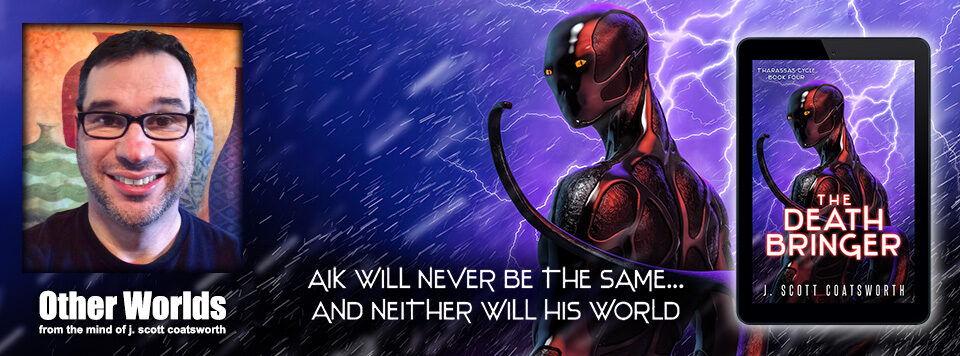
I’m coming up on my five year publication anniversary in May. Interestingly, it’s not the first story I sold – “The Bear at the Bar.”
That honor actually goes to “Avalon,” originally published by Mischief Corner Books in their wonderful and now defunct MCB Quarterly journal.
When I was first starting out, I got two main complaints from readers in my reviews.
The first one was that my stories just weren’t long enough. This kind of pissed me off at first – I mean, you knew you were buying a novella, right? – until a friend pointed out that it meant they wanted to read more from me. And then it seemed like more of a compliment than a complaint.
The second was that my stories were lacking in characterization – that my characters were flat and didn’t connect with some readers.
Ouch.
We’re in the business of telling stories, and a big part of that is creating believable people that seem to leap off the page and into the reader’s consciousness. If I can’t do that, I might as well go back to my 9-5 (well, 6 AM-9:30 PM) job, and leave the writing to the experts.
Then a funny thing happened. I kinda fell into some great characters in “The Stark Divide,” or at least many of my readers thought so. A plot device I set up led to a few interesting character flaws, and powered that story to a place I’d never gone before.
The same thing happened with “Skythane.“
Readers seemed to love these broken characters who were slowly finding their way to the light.
I’m a little dense, so I didn’t really even realize what I was doing until a beta reader for “The Rising Tide” brought it up. She , mentioned that one of the things that made “The Stark Divide” so compelling for her was its complicated, flawed characters. Where were the flaws in this one?
I had to sit with that for a bit.
I had created some really lovely characters for the book, but upon reflection she was right. They were pretty much all really good, or really bad.
If your character is all good, they will always do the right thing, and this starts to get boring for the reader. And if your character is all bad, they fall flat, with no nuance – the same two dimensionality I used to be accused of.
So I went back in and added a few flaws. And I extended the arc of the most flawed character in the book, whom I had killed off in an early draft. And with those changes, the ending came to life with a sense of drama and redemption that really made the book.
Flaws allow us to expose the raw parts of our characters that a “perfect” character hides, the gooey centers that leak out and make a mess of things. Because of their flaws, they don’t respond to everything the way a “good” or “perfect” character would. Sometimes they snarl and snap in response to perfectly innocent question, causing hurt feelings and a ripple through the rest of the story. Sometimes they sulk when everything seems to be going well. And sometimes they lie, cheat and steal to cover up their own shortcomings.
My friend Damon Suede taught a course at one of the recent Dreamspinner Retreats about character development. He suggested that each character should be assigned a verb that suggests how they will react in any given situation. So for “Jim,” the verb might be “advance” – given the choice, he is likely to push forward whenever he can. Mike’s might be “retreat,” setting up an interesting dynamic between the two as one pushes forward and the other pulls back.
Tie this back to a character flaw, and things get interesting.
Mike always retreats because he was badly hurt by his abusive alcoholic father, and retreating was his way of dealing with that part of his life.
Jim advances because his own mother, dealing with cancer, chose to end her life, and he’s always felt she should have taken the chemo. Maybe if she had pushed harder, she would have survived.
And there you have a great dynamic for a will they-won’t they story.
As a writer, you should never stop learning, never quit trying to improve your craft. Characterization is at the heart of this, along with plotting and world-building.
I still have a lot to learn, but I am now putting these tools I’ve been getting in practice – letting my characters be weak and flawed and broken and seeing where that leads them, and me.
And it seems to be working. From my latest “Ithani” review:
This is a world full of wonderfully flawed, wonderfully honest characters. Each person is a world in themselves, unique and full of interest. And each is allowed to follow their own arcs and their own hearts, for better and for worse… The growth the characters are allowed is stellar, and it lets the writer neatly sidestep a number of worn out tropes, including The Jealous Ex Shows Up and The Dead Sweetheart Wasn’t Really Dead. Situations are introduced looking like they might go down these tired roads, but the characters quickly reframe the situations into something much more fulfilling… And what comes of the journeys they all take is fascinating.
–O.E. Tearmann
So I’m happy with my flaws. As the photo above suggests, flaws are more than just signs that someone is broken. They often expose something far more interesting underneath.
To my writer friends – how do you use flaws to illuminate a character, and/or to redirect the story down an unexpected path?
